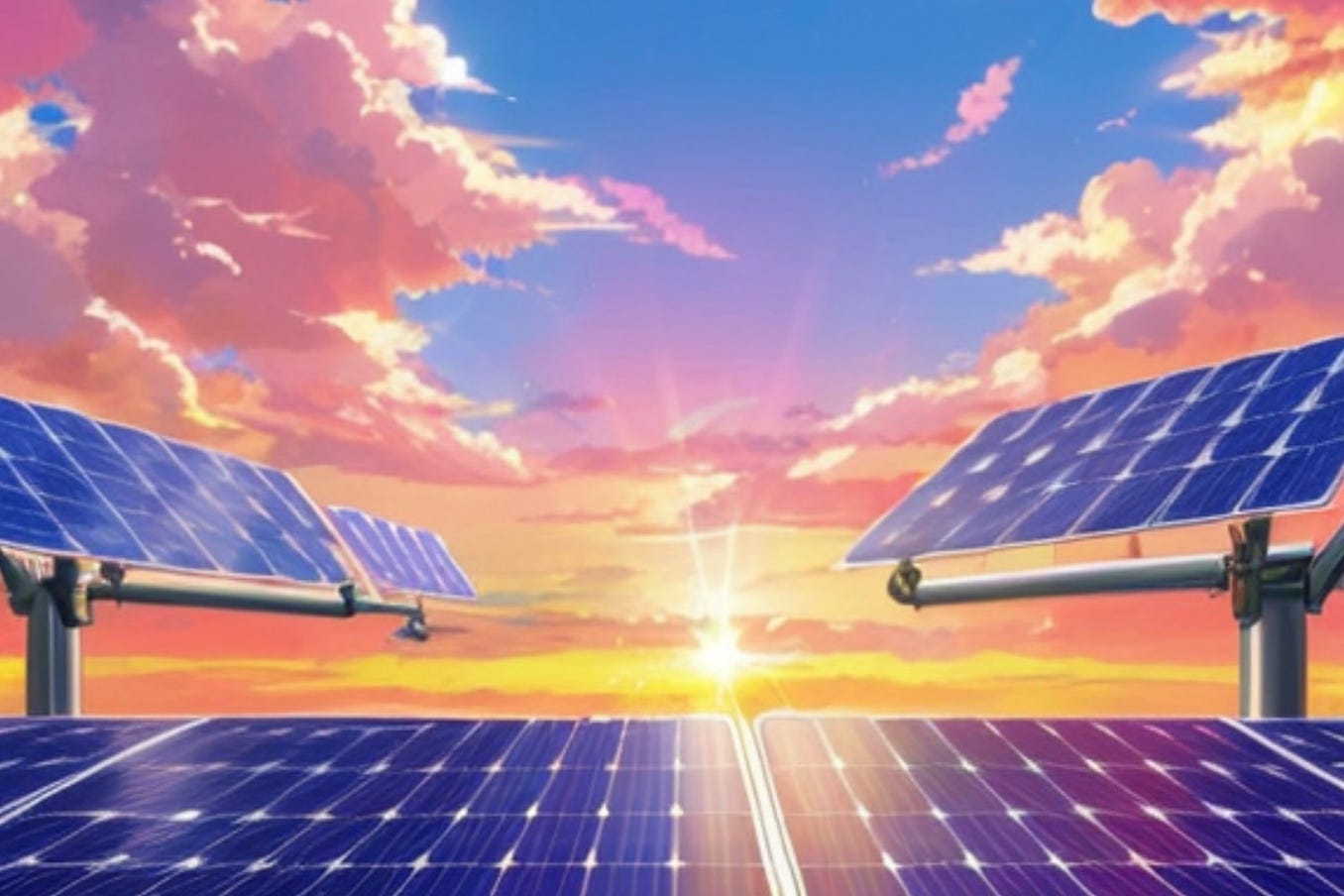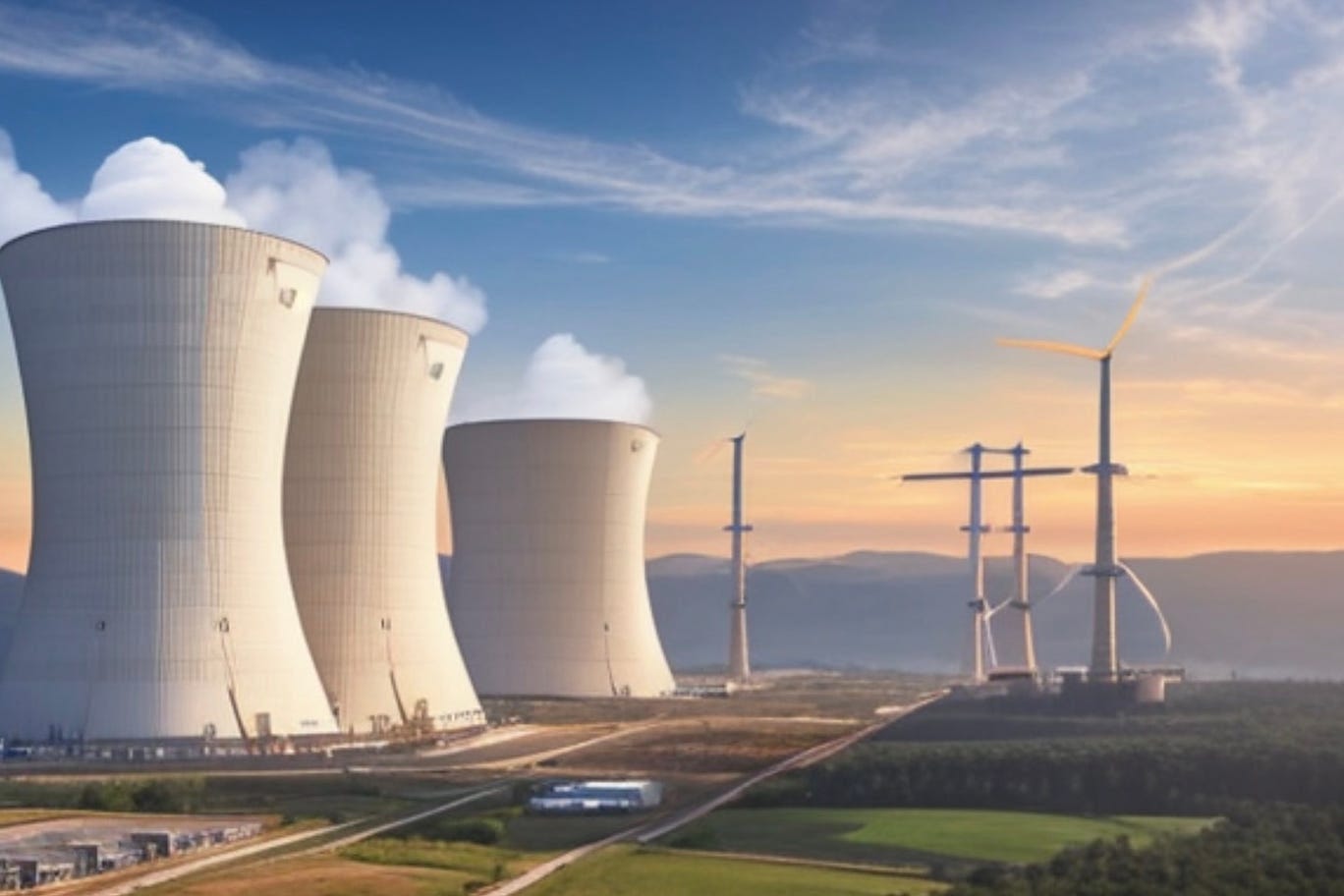The Utopian Vision of New York's True Climate Believers and the Reality They Refuse to Accept, Guest Post by Roger Caiazza of Pragmatic Environmentalist of New York.
A recent op-ed titled “With New York’s climate action goals in question, governor’s comments on future role of nuclear power worry environmental advocates” at Riverhead Local provides an example.
The Utopian Vision of New York's True Climate Believers and the Reality They Refuse to Accept
AUG 19
Guest Post by Roger Caiazza of Pragmatic Environmentalist of New York.
In a recent article describing a new category of generating resources called Dispatchable Emissions-Free Resources (DEFR) I noted there still are people who maintain that existing technologies—led by solar and wind—can solve the climate crisis. A recent op-ed titled “With New York’s climate action goals in question, governor’s comments on future role of nuclear power worry environmental advocates” at Riverhead Local provides an example.
Overview
The Climate Act established a New York “Net Zero” target (85% reduction in GHG emissions and 15% offset of emissions) by 2050. It includes an interim 2030 reduction target of a 40% reduction by 2030. Two targets address the electric sector: 70% of the electricity come from renewable energy by 2030 and a requirement that all electricity generated be “zero-emissions” resources by 2040. The Climate Action Council (CAC) was responsible for preparing the Scoping Plan that outlined how to “achieve the State’s bold clean energy and climate agenda.”
The Integration Analysis prepared by the New York State Energy Research and Development Authority (NYSERDA) and its consultants quantifies the impact of the electrification strategies. That material was used to develop the Draft Scoping Plan outline of strategies. After a year-long review, the Scoping Plan was finalized at the end of 2022. Since then, the State has been trying to implement the Scoping Plan recommendations through regulations, proceedings, and legislation.
Three recent reports all have suggested that implementation of the Climate Act is not going as planned and that reassessment is necessary.
The Public Service Commission (PSC) Clean Energy Standard Biennial Review Report found that the 70% renewable energy goal will likely not be achieved until 2033.
The New York State Comptroller Office Climate Act Goals – Planning, Procurements, and Progress Tracking audit found that the PSC and NYSERDA implementation plans did not comprise all essential components, including “assessing risks to meeting goals and projecting costs.”
The New York Independent System Operator (NYISO) 2023-2042 System & Resource Outlook described issues that threaten reliability and resilience of the current and future electric system.
Dispatchable Emissions-Free Resources
One of the most important reliability issues is the need for a new category of generating resources called Dispatchable Emissions-Free Resources (DEFR) necessary for a future grid that depends upon wind, solar, and energy storage resources. Reputable analyses of the future New York electric system agree that new technologies are necessary to keep the lights on during periods of extended low wind and solar resource availability.
Despite the overwhelming consensus of the organizations responsible for keeping the lights on that DEFR is needed there are people who believe otherwise.
One such person is Karl Grossman. According to his bio published with the op-ed:
Karl is a veteran investigative reporter and columnist, the winner of numerous awards for his work and a member of the L.I. Journalism Hall of Fame. He is a professor of journalism at SUNY at Old Westbury and the author of eight books.
The basis of Grossman’s belief is Dr. Mark Z. Jacobson’s 2023 book “No Miracles Needed: How Today’s Technology Can Save Our Climate and Clean Our Air.”
Grossman interviewed Jacobson and quoted him as saying: “Whether New York can reach the 70% goal by 2030 is a matter of social and political willpower. It is not a question of technology or economics.”
Grossman describes Jacobson’s claims, but I am not going to respond to those claims in detail. In my recent article about DEFR I explained why I know that Jacobson is wrong. In brief, I found six analyses describing the need for new technology: the Integration Analysis, New York Department of Public Service (DPS) Proceeding 15-E-0302Technical Conference, NYISO Resource Outlook, Richard Ellenbogen, Cornell Biology and Environmental Engineering, and Nuclear New York.
Jacobson and his protégé Dr. Robert Howarth frequently refer to their “peer-reviewed” work as validation but neglect the rebuttal peer-reviewed responses to their work and the many other peer-reviewed analyses that show DEFR is needed.
Finally, I also found three books that refute the Jacobson book and his claims that the energy transition can be accomplished with no new technologies at low cost with large benefits.
Environmentalist Responses
I recently noted that Governor Hochul seems to be floating the idea that reassessment is necessary. Grossman noted that Newsday headlined a two-page spread two weeks ago: “Hochul Says New York Won’t Meet 2030 Climate Goal.” In the article, Newsday cited Gov. Kathy Hochul’s comments in an Albany Times Union newspaper podcast.
“We’re gonna get to our goals, but if we miss it by a couple of years—which is probably what’ll happen—the goals are still worthwhile,” Hochul said. But we have to think about the collateral damage of all of our major decisions… either mitigate them or you have to rethink them.” In the podcast, she also termed herself as “a staunch environmentalist.”
The Grossman op-ed described how environmentalists are reacting. Not surprisingly they still claim that the state has not done enough on renewable energy.
Judith Enck, for seven years regional administrator of the U.S. Environmental Protection Agency for an area that includes New York State and before that deputy secretary for the environment for two New York governors, said delaying the 70% goal “is a terrible decision by the governor. I hope she revisits it. We’re in a climate crisis. She says things have changed—and they have: the climate crisis has gotten worse. The governor should look at ways to accelerate meeting the goals, not delaying them.” Renewable energy, she said, is not a priority for state government.
Liz Moran, New York political advocate for the group Earthjustice, said: “The administration has been appearing to slow walk it from the jump. It’s a fear-based approach rather than a brave and bold approach that we need in the face of this crisis.”
“We’re certainly not ready to wave the white flag,” said Julie Tighe, president of the New York League of Conservation Voters.
Environmental advocates such as these ignore or disparage analyses such as the NYISO 2023-2042 System & Resource Outlook that describes issues that threaten reliability and resilience of the electric system. I recently described how the proposed transition that relies on wind and solar exacerbates their concerns.
Unfortunately, the document is full of technical jargon and politically correct terminology, so the full implications of this analysis are not readily apparent. NYISO cannot bluntly say this cannot work as proposed on the schedule mandated but that is the underlying message.
Environmental advocates also ignore New York’s role in this global problem. Using GHG emissions data from Our World In Data I looked at recent NY emissions with global data. In 2021, NYS GHG emissions (GWP-100) were 247 million metric tonnes (MMT). GHG emissions from China were 13,774 MMT and from India were 3,879 MMT.
The increase in emission from 2020 to 2021 were 498 MMT in China and 265 MMT in India. New York emissions will be supplanted by emissions from China or India in less than one year. Overall, New York’s emissions are less than a half a percent of global emissions. This does not necessarily mean that we should not do something, but it does mean that meeting the arbitrary goals of the Climate Act will not have a meaningful impact on global warming impacts.
Grossman’s op-ed goes on:
Meanwhile, Politico published a report in May headlined “New York policymakers thaw on nuclear energy.” The piece by Marie J. French began: “Gov. Kathy Hochul has cracked the door open to the potential for new, small nuclear power plants as a way for the state to try to meet its ambitious climate coals.”
The article told of this happening “at a private dinner with environmentalists April 29, according to two attendees who spoke on the condition of anonymity because of the private conversations. It’s not the first time that her administration has raised the idea. One of her top aides suggested as much earlier this year.”
Enck said last week: “I think the governor even speculating on nuclear power in New York is trouble.” Enck spoke of how decades were spent in “shutting down the Indian Point nuclear plants” 25 miles north of New York City. We “shouldn’t promote the same thing again.”
Nuclear is the only proven DEFR technology that can be expanded sufficiently to fulfill the energy requirements of the Climate Act goals. Nuclear energy generates zero-emissions electricity, provides firm power that does not require supplemental ancillary transmission support, has low land-use requirements, and requires less transmission development than wind and solar.
The dangers of nuclear are consistently over-hyped. Bill Gates has pointed out that “nuclear energy, in terms of an overall safety record, is better than other energy.” It is a mystery to me why any environmental advocate continues to harbor this irrational fear of nuclear power and consider its use troubling,
Discussion
Grossman concludes:
The central message of Jacobson’s “No Miracles Needed” book is how existing technologies—led by solar and wind—can solve the climate crisis, and he emphasizes how nuclear power is not needed and also investing in it would obstruct a transition to green renewable energy.
I conclude Grossman has naively backed the wrong source for this op-ed. Even the Climate Act Scoping Plan acknowledges the need for the new DEFR technology directly contradicting Jacobson’s primary claim. The Scoping Plan also contradicts all the other cost, schedule, and technology requirement claims made by Jacobson.
The NYISO 2023-2042 System & Resource Outlook findings are consistent with the Scoping Plan. In my opinion, the arguments of anyone who does not face any repercussions if proven wrong should be given much less weight than arguments from those who have responsibilities.
Regarding the nuclear power recommendations, Grossman is also wrong. The article does not provide any rationale for not developing nuclear other it would obstruct the transition to green renewable energy. The fact is that France successful cut its GHG emissions using nuclear power, but no jurisdiction has managed similar electric sector reductions relying on wind and solar.
As a utility meteorologist with over 40 years’ experience I think the variability of wind and solar is an insurmountable challenge for a reliable electric grid. In my opinion, one of the advantages of nuclear is that it would preclude the need for “green renewable energy”.
Conclusion
On August 5 Governor Hochul announced a Future Energy Economy Summit that will “gather feedback on strategies to accelerate renewable energy deployment and explore the potential role of next generation clean energy technologies”. Grossman’s op-ed is the first article I have seen to suggest that nuclear power should not be one of the next generation clean energy technologies.
In my article describing the announcement of the summit I noted that it will be interesting to see how legislators, the Big Green NGOs, climate activists, and the renewable energy shills react to nuclear power. Based on this article it appears Big Green NGOs and climate activists will not acknowledge that nuclear and other pragmatic considerations are necessary for the Climate Act implementation.
#Nuclear #Emissions #NewYork #Grossman #Jacobson #Howarth #Climate
Roger Caiazza blogs on New York energy and environmental issues at Pragmatic Environmentalist of New York. This post represents his opinion alone and not the opinion of his previous employers or any other company with which he has been associated. Roger has followed the Climate Leadership & Community Protection Act (Climate Act) since it was first proposed, submitted comments on the Climate Act implementation plan, and has written over 400 articles about New York’s net-zero transition.





